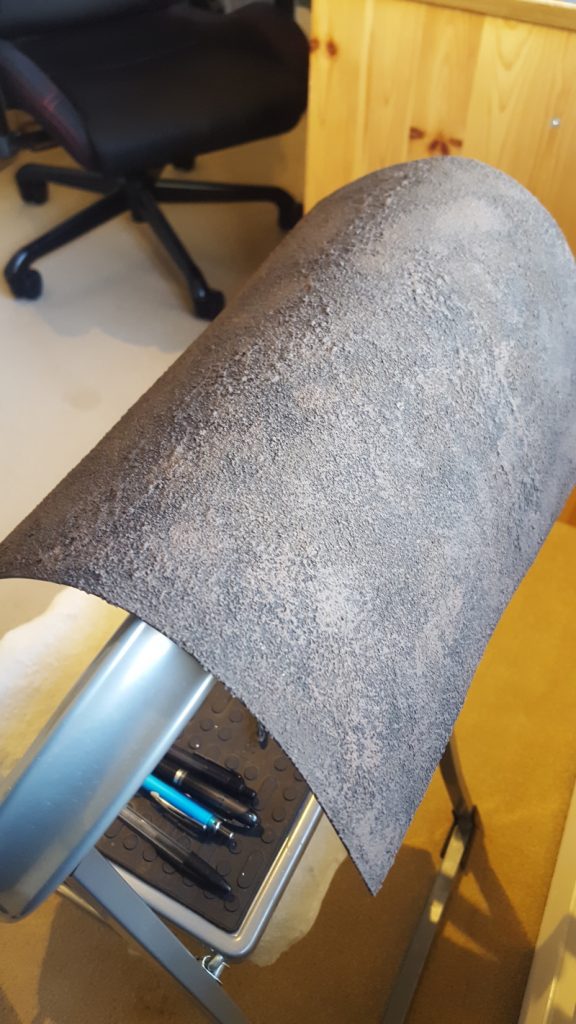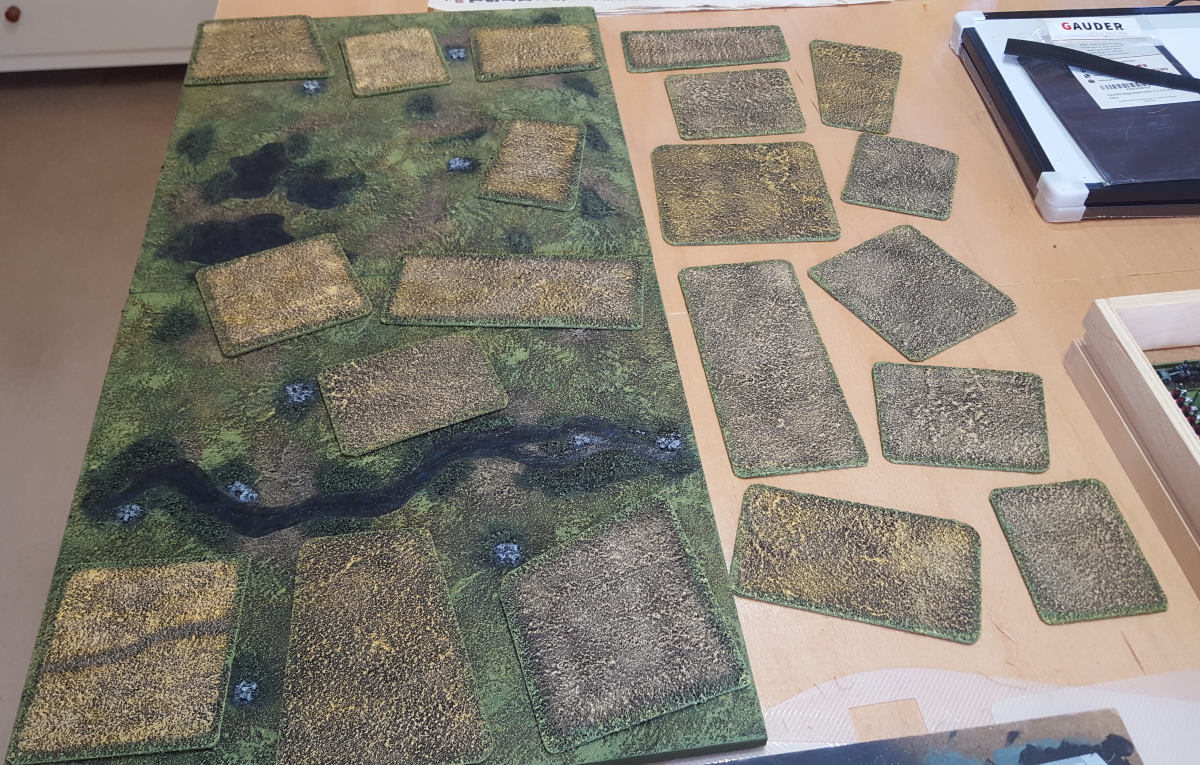There’s something nice about making wargame terrain and scenery that isn’t going to warp in the future – so working with neoprene sheet has been a revelation for me. My first efforts focused on some islands for naval games (more on that soon) but recently I decided it would be good to make some textured fields for 6mm games.
My test pieces were cut out of 1.5mm thick neoprene (a few quid for a square metre off ebay) and textured with my usual combination of Sandtex masonry paint and builders’ sand. I then reduced the production time for the second batch by texturing and painting a larger sheet (about a foot square) and then cutting it up and texturing the edges.
As long as I don’t try too hard to crack the textured surface, the end result is robust and flexible. I know some people have had great success with caulk as the coating layer, which I think provides a greater level of flex, but as I’m not intending to roll these pieces up the paint is proving sufficient.

I used a relatively limited pallet for the field colours, focusing on a wheatfield or recently-cropped look. I decided to edge the fields in green to match and blend in better with the terrain boards.
I am also making some field edges – mostly strips and corners of rough hedges and trees – to put around some of the fields. Keeping them separate makes for easier storage, as the fields can simply be stacked together.
I had been considering making some terrain boards with 6mm fields painted on, but these place-down fields have given me a more flexible (haha) solution. I aim to get these on the table for the next Rhine War battle in the coming weeks.


Very effective and the non-warping property is particularly appreciated – thanks.
Hi There,
just stumbled across your homepage. I am about to start building a new terrain board and I love what you have done with board (?) in the topmost picture (i.e. the one with a small river flowing through). You don’t happen to have a tutorial or something on how you went about creating it mostly the colors used as well as how you created the interesting texture?
BR,
Viktor
Hi Viktor, thanks for taking an interest.
Actually I did a multi-stage walkthrough of how I make my terrain, back in 2014.
Here’s the first post, just follow the sequence if you want to read more:
https://themedetianwars.org.uk/2014/01/new-hills-stage-1.html
Basically the texture is comes from a layer or two of sand, painted dark to start with and dry-brushed from there.
Hope it helps, and it’d be good to hear how you get on if you give it a try.
Cheers